Carri Jobe, Amelia Briggs, & Douglas Degges: The Weight of Play [Analysis]
The Weight of Play, curated by Carri Jobe, opened in February of 2018 at Lipscomb University's Hutcheson Gallery. The show featured paintings by Carri Jobe, Amelia Briggs, and Douglas Degges. As a whole, the works effortlessly mirrored the show’s theme: playfulness that belies its opposite, lightness that depends on heaviness to exist. The paintings were installed to enhance a dynamic range of size, with the largest dwarfing the smallest, the pieces in between sustaining each other in a lyrical flow.
Carri Jobe. Hooked. 2017. oil on linen.
Play itself is like this lyrical flow. It is the structure that keeps storylines aloft until their conclusions. It imperils the protagonist and teases away the threat of permanence. As with a painting in progress, play is the embarking upon a pursuit to materialize something nameless, to follow a clue into a new matrix of parameters, to work towards establishing a new system of contingents.
Amelia Briggs. Grouch. 2018. oil, acrylic, latex, and flashe on stuffed fabric over panel.
In color and composition, all works reinforced and sustained connectivity between themselves. Jobe’s complex vocabulary of infinite greens, soft pinks, and deep golds are broken into sparkling tropical gradients by Briggs, with chalky pastels and vibrant primaries by Degges. The compositions in each image were arranged in the gallery so that the works' internal shape and structure reflect each other almost exactly, leaving structural traces in a viewer's mind that cause the works to overlap and stack upon one another. From that vague inner framework, they morph in the visual memory to be inseparable from one another.
Each artist differs in their relationship with the space between a creation and its referent, the departure from which ignites an intense lightness in the face of loss. The “Weight of Play,” a meditation on this duality, is perfectly addressed in the three painters' approaches to deviation from structure, and in their methods of implementing color systems.
The cloud-like independence of Douglas Degges’ oil & gypsum on panel addresses the lightness of a painted object that carries itself. The intense texture of the paintings paired with the simple, everyday material (raw industrial-looking panel) leads us to ignore the support of the painting in favor of the painting itself. The paint seems to exist largely without the validation of the support, and is, in itself, both support and painting. By choosing a support that appears raw and defies the traditional cleanliness of gallery-style paintings, Degges makes sure that the support mimics nothing. At the same time, his dismissal of support masks the the gypsum texture, which imitates the bulbous coagulation of paint itself.
(detail) Douglas Degges. Untitled. 2018. oil and gypsum on panel.
Like Degges’ works, Briggs’ “Inflatables" carry themselves, yet their substance is wrought from meticulous imitation. The works are substantially embedded in the duality of lightness and heaviness, play and seriousness, as the painting’s support has been comically bloated, giving them a precarious excess that is at once deflating and firm. This perches the viewer on the verge of being uncomfortable with the possible animism, and breathing temporality of each painting. The gravity of these pieces is both sustained by and contradicted by the scintillating color, which oscillates in a dreamy space between pale grey and neon extremes. A feeling of neglect pairs with one of nostalgia - the memory of play through the lens of some forgotten unknown. The viewer suspects a betrayal of sorts - the evidence of a puncture, excessive hardening, the material not being what it seems (as with moments where the substrate rolls and congeals to reference unknown biological substance). The referential shape of the canvases allows Briggs to toy with kitsch in a way that introduces an absurd happiness, tempting the observer to ask, “is this too good to be true?”
Amelia Briggs. Press Start. 2018. oil, acrylic, and flashe on stuffed fabric over faux fur and panel.
Carri Jobe. On Stage. 2016. oil on canvas.
Briggs’ overt reference to lightness and heaviness accentuates the playful and dynamic mark-making in Carri Jobe’s paintings. Jobe’s works are at once wilting and joyful. Her established language of shapes read in the direction of a guided compositional flow. At times, streams of color spring up like embers from a fire, at others they bow like leaves burdened by their own weight. The larger paintings enhance moments of color variation through singular abutments and carefully carefree spaces, giving the paintings an intense intimacy. Moments with the paint become iconic, as the periphery dissolves into a cradle of color, literally held in on many paintings by thick triangles spanning the bottom corners. Serenity in a first reading gives way to a quiet, abrasive abjection, with marks that don’t reach their destinations, brazen colors that reluctantly appear beneath careful harmonies.
Contradictory arbitrariness of color is a feature in Degges work, his treatment of color invokes both tenderness and mania. The repetitive application of abundant layers signals to the viewer that the surface color is critical, yet doesn't matter at all. Between broad flat planes of color and gypsum bulges, a multitude of historical traces are left exposed. The observer is left to wonder whether Degges was choosing the perfect color by trial. It elicits a sadness, through lost history, lost time, hidden work, and untold stories. Hues that could have been, but were not chosen, have been rendered meaningless by their multiplicity, as quantity itself signals arbitrariness.
Douglas Degges. Untitled. 2018. oil and gypsum on panel.
This same arbitrariness gives Carri Jobe’s paintings their initial burst of serenity - her visible departure from imagery. In this body of paintings, she works from an arguably unobtrusive framework: the academic still life. By nature, this referent is usually an arbitrary pile of objects meant to signify little, but to carry the composition of a new exploration of forms. By pressing the referentiality of her paintings even further from the source subject, Jobe’s paintings impress upon the viewer a sense of almost grasping an undecipherable image.
Through the compilation of emotive color systems, the negotiation of an object’s relationship to its referent, and the paint’s relationship to it’s support, Jobe, Briggs, and Degges materialize the essentially dualistic themes set up in “The Weight of Play.” Buoyancy without heaviness is immaterial and untouchable. In the shedding of supports, an artist must locate a sense of failure. At that point of departure, detachment opens the stage for the comedy of raw truths. In the uncomfortable, ticklish moments of vulnerable displacement, the process of transformation, the sublime, the beautiful can set in without masking the truth.
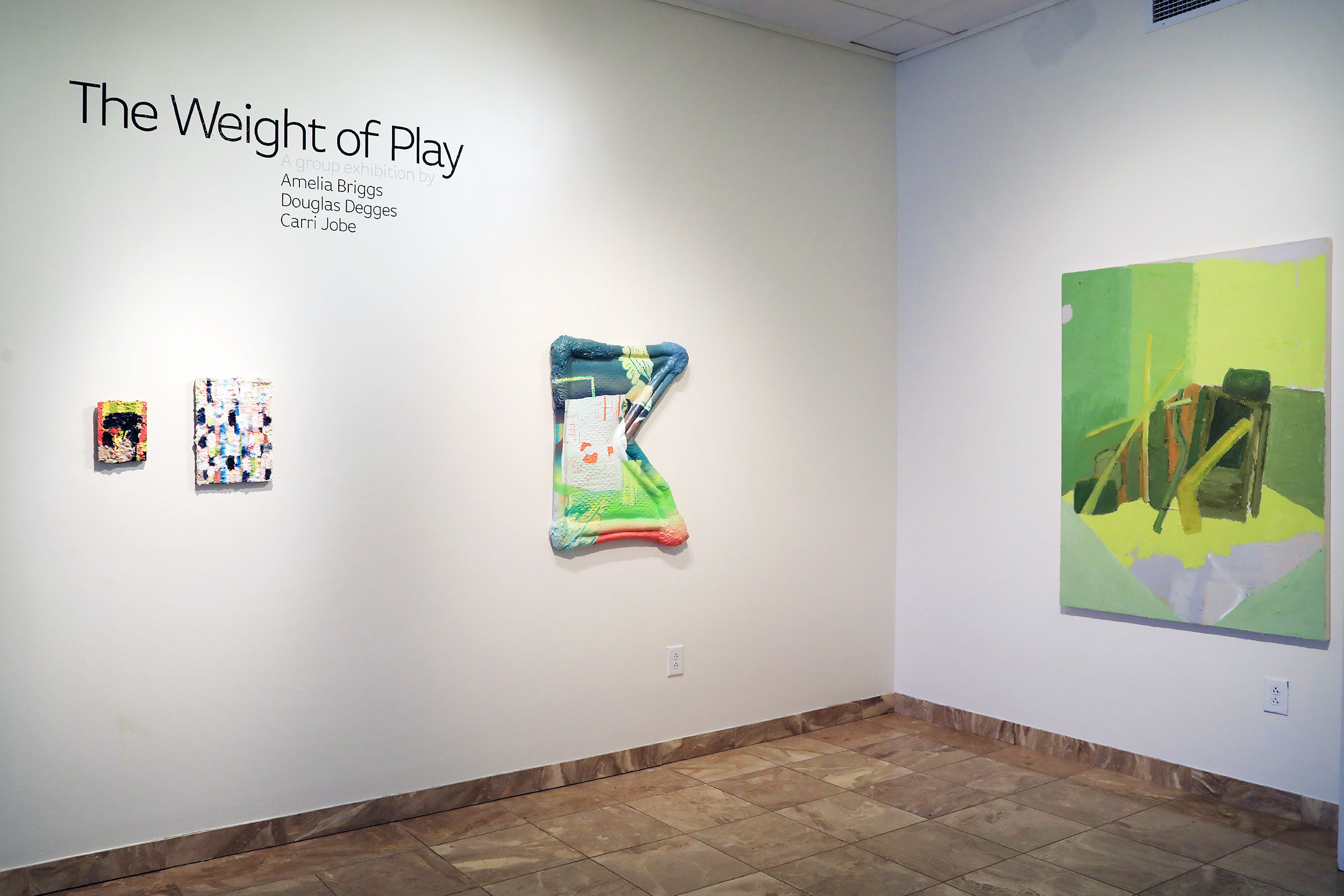


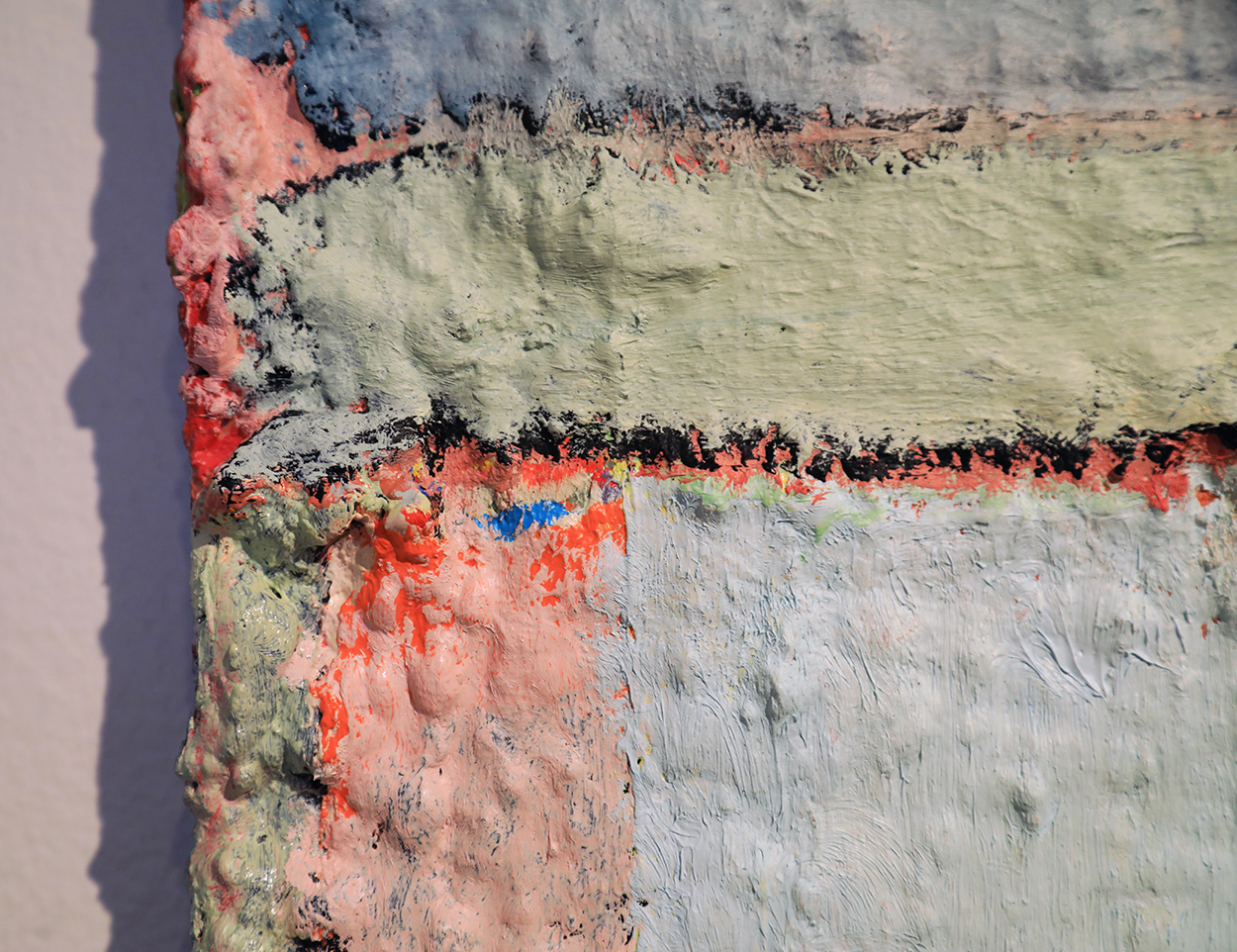

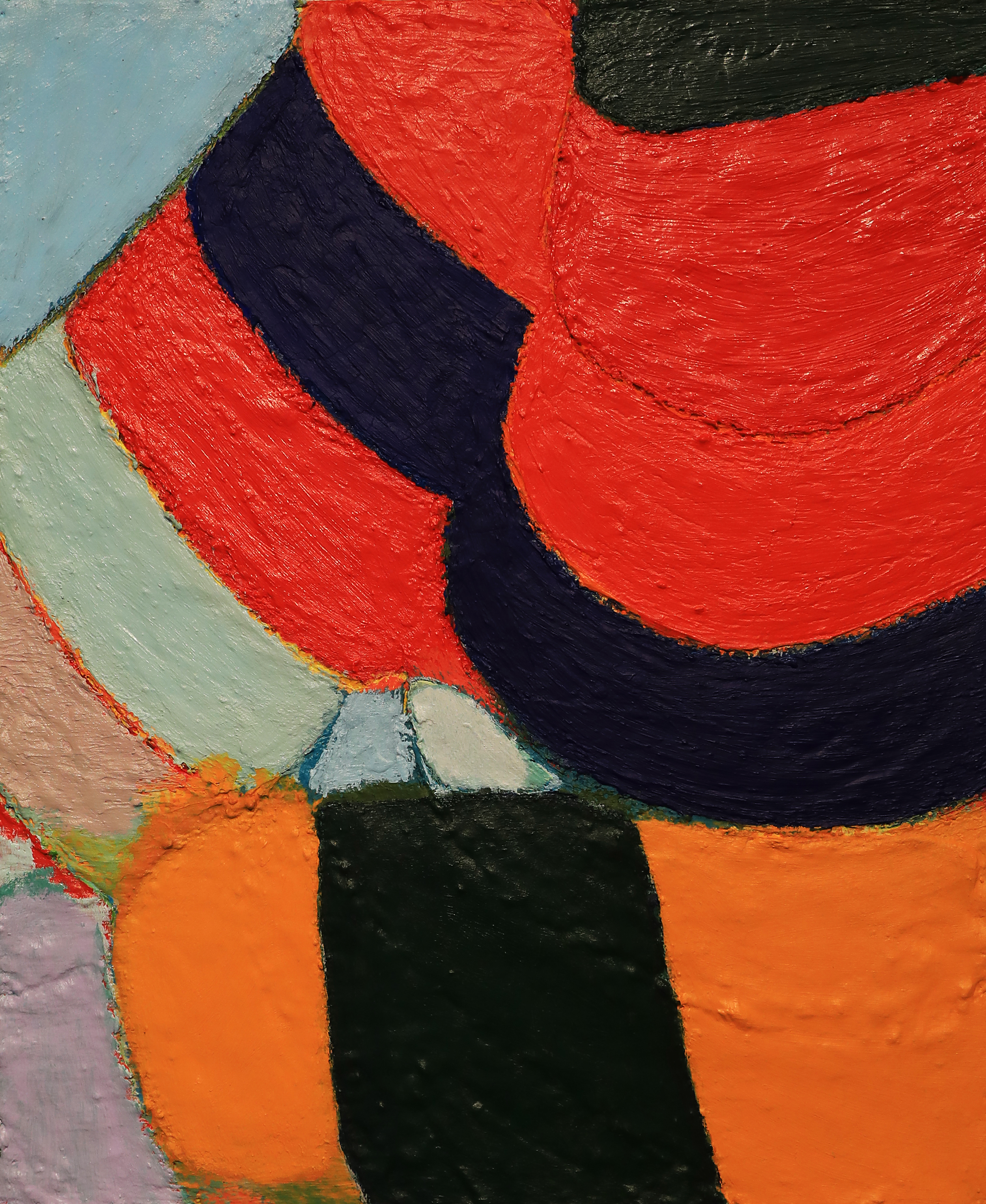
![[Detail] Douglas Degges. "mike's socks." 2017. Acrylic on Panel.](https://images.squarespace-cdn.com/content/v1/59f121cdb7411c32b424f560/1520441588732-JXRNPMAVS9Q273QZ1A6Y/2018-02+Weight+of+Play+%289%29.jpg)
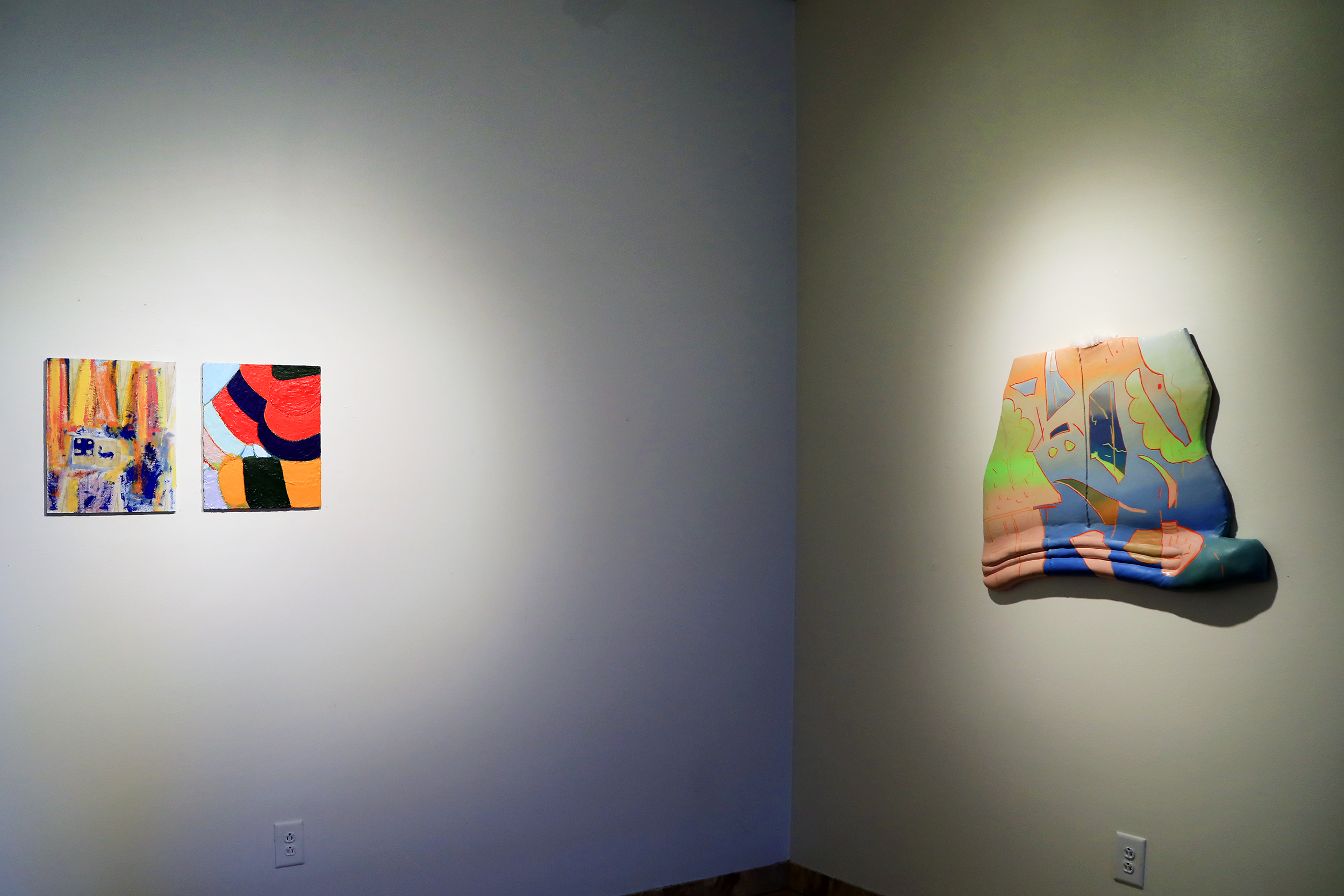
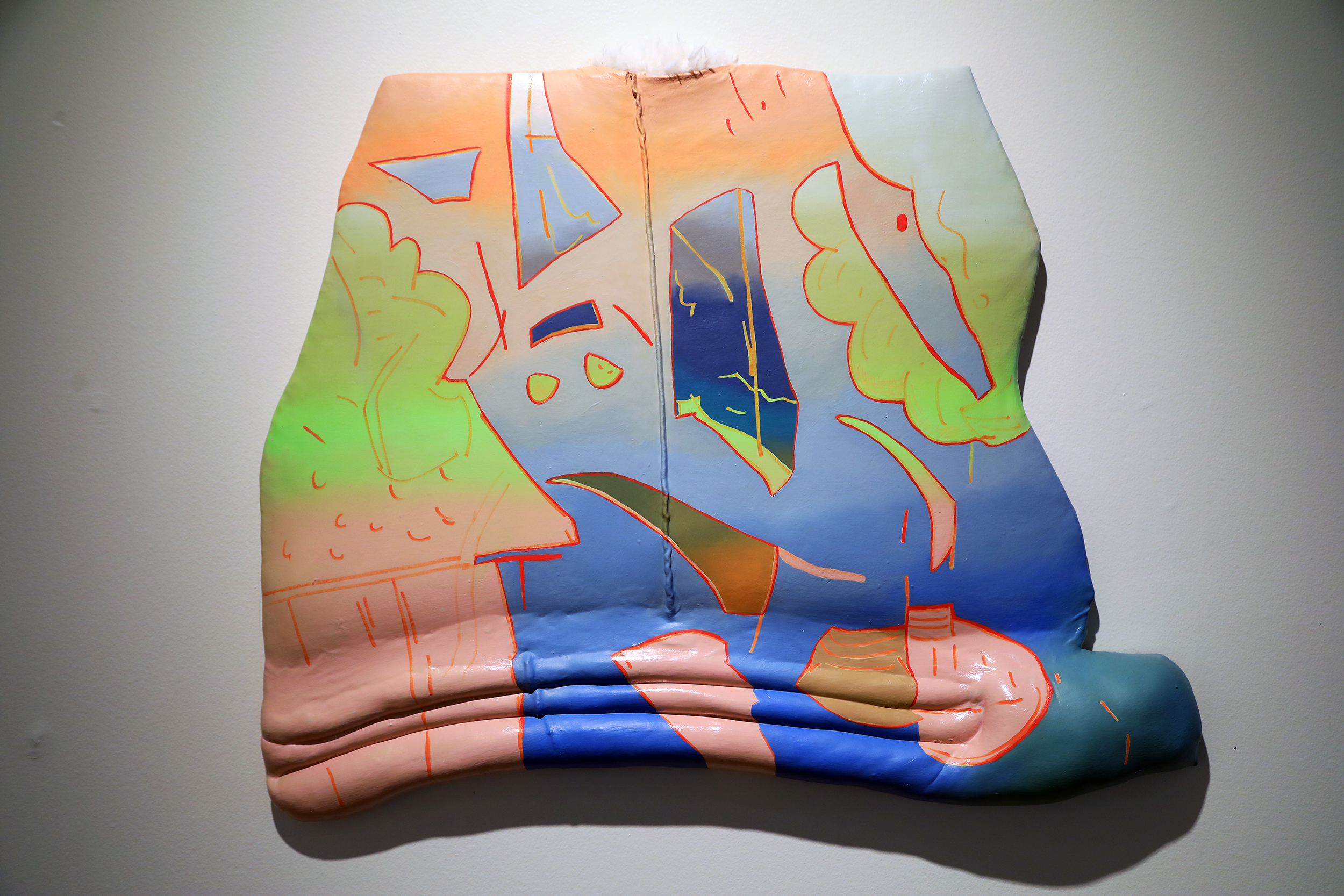
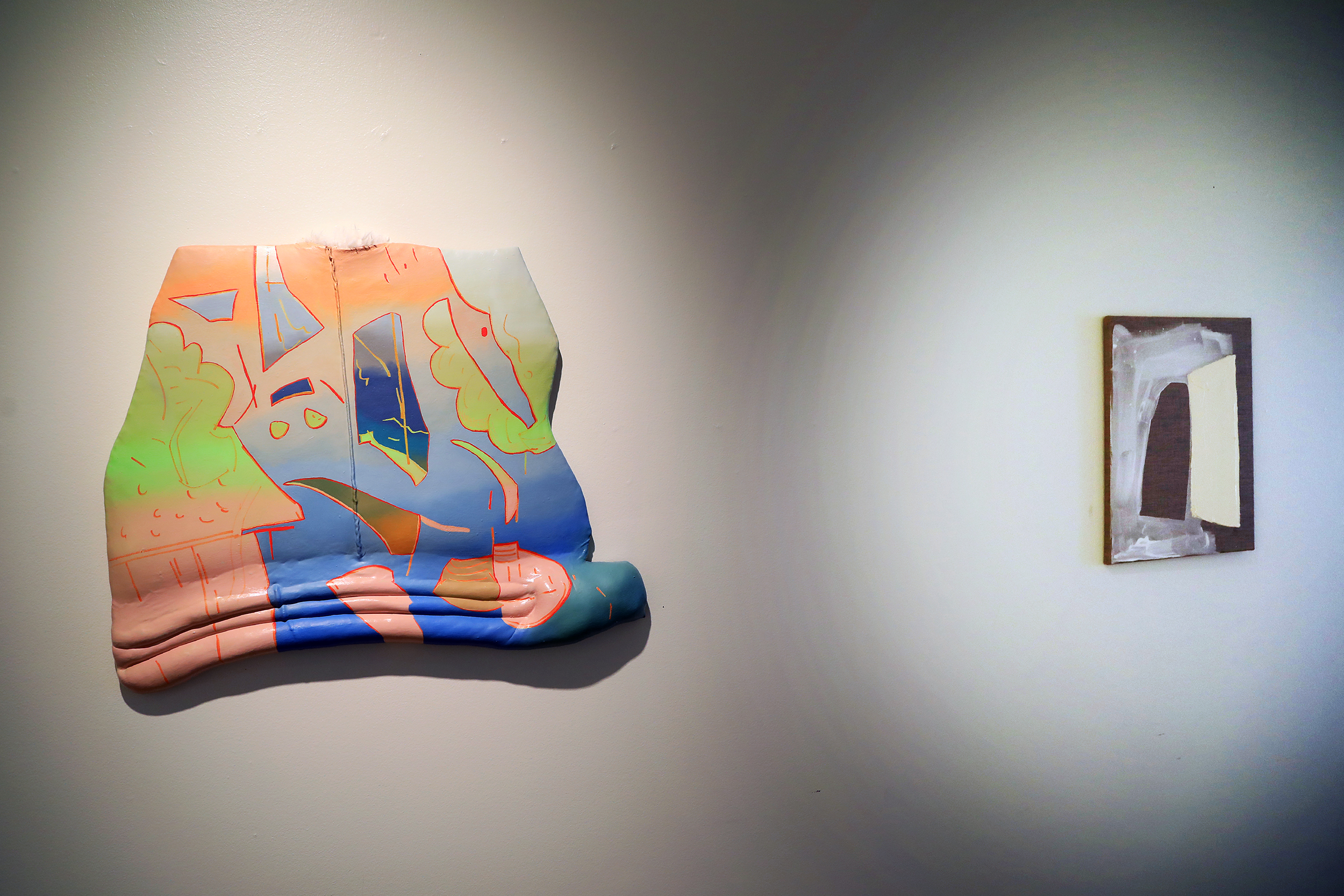
![[Detail] Amelia Briggs. "Press Start." Oil, Acrylic, and Flashe on Stuffed Fabric over Faux Fur and Panel. 2018.](https://images.squarespace-cdn.com/content/v1/59f121cdb7411c32b424f560/1520441600152-NOJ8IN3S5SBUW3FYM4V7/2018-02+Weight+of+Play+%2813%29.jpg)
![[Detail] Amelia Briggs. "Press Start." Oil, Acrylic, and Flashe on Stuffed Fabric over Faux Fur and Panel. 2018.](https://images.squarespace-cdn.com/content/v1/59f121cdb7411c32b424f560/1520442978389-JF9I8U5LETYCW7V9ND3I/2018-02+Weight+of+Play+%2814%29.jpg)
![[Detail] Amelia Briggs. "Press Start." Oil, Acrylic, and Flashe on Stuffed Fabric over Faux Fur and Panel. 2018.](https://images.squarespace-cdn.com/content/v1/59f121cdb7411c32b424f560/1520443010126-CTG256QM26W7KI2BOMRE/2018-02+Weight+of+Play+%2815%29.jpg)
![[Detail] Carri Jobe. "Prop." 2017. Oil on Canvas.](https://images.squarespace-cdn.com/content/v1/59f121cdb7411c32b424f560/1520443009606-GUM7HQTQ3KDW7O666FX3/2018-02+Weight+of+Play+%2816%29.jpg)

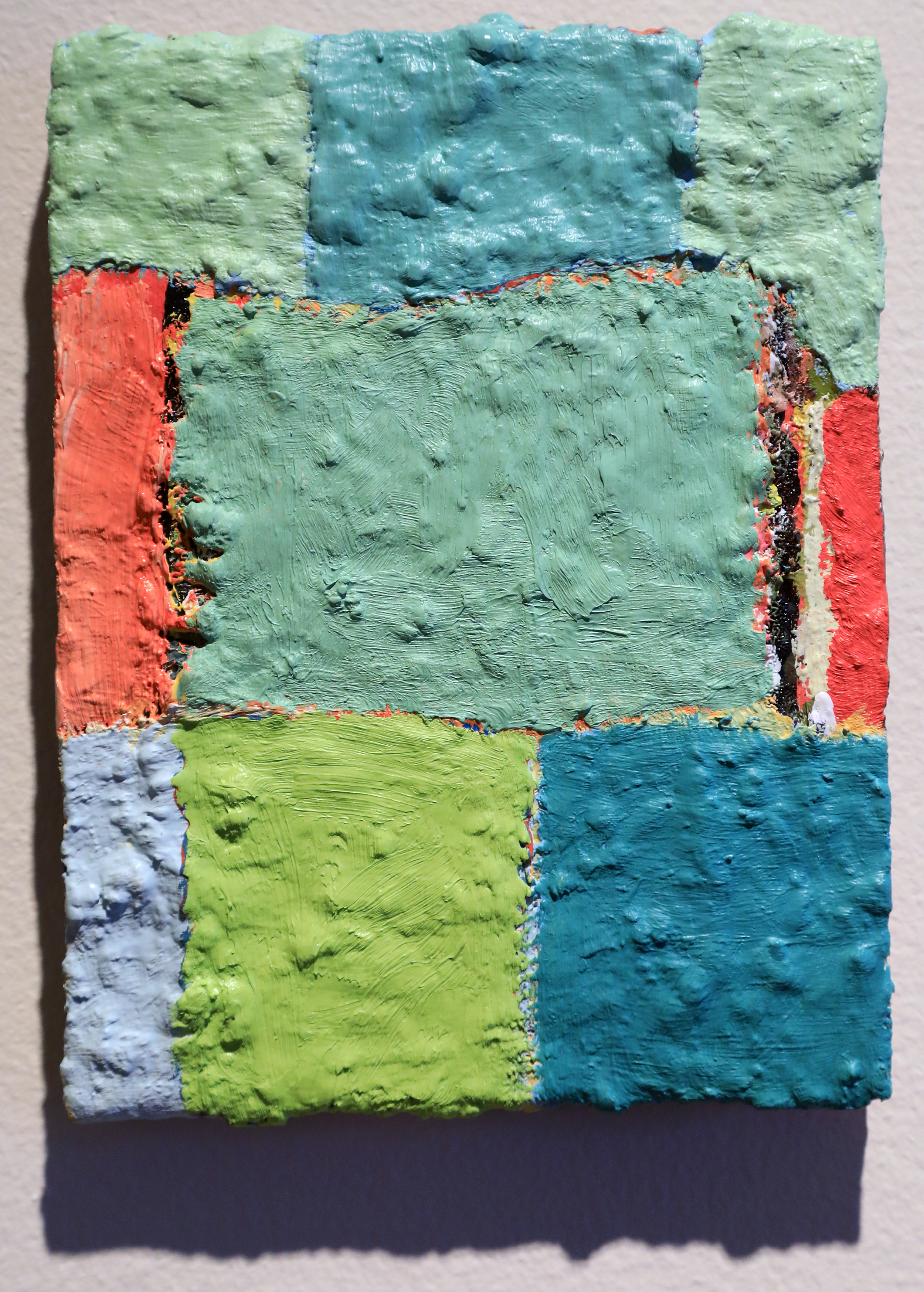
![[Detail] Douglas Degges. "Untitled." 2017. Oil and Gypsum on Panel.](https://images.squarespace-cdn.com/content/v1/59f121cdb7411c32b424f560/1520457430805-6DF1HOGTKYJ6VDUP4MAG/2018-02+Weight+of+Play+%2824%29.jpg)
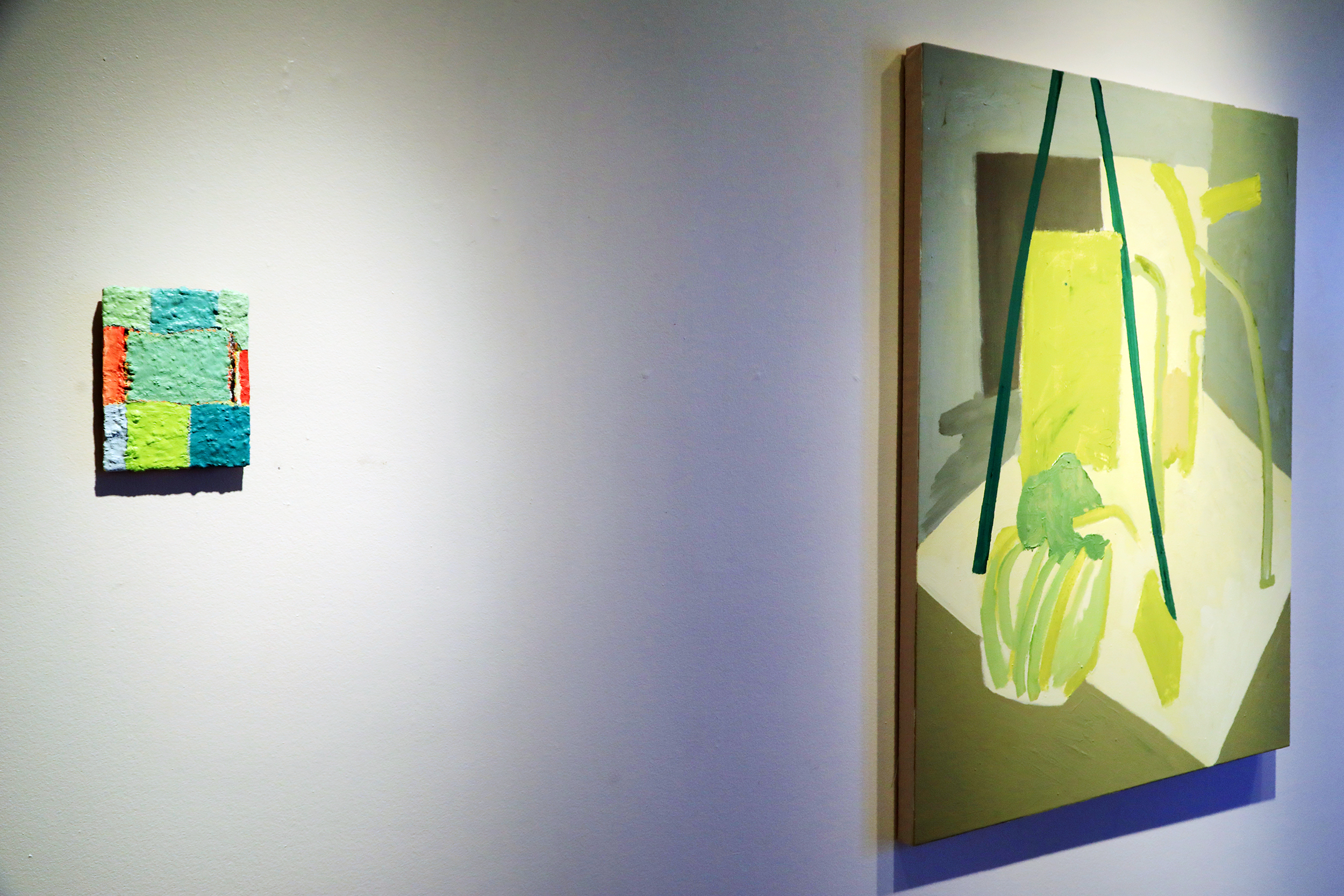
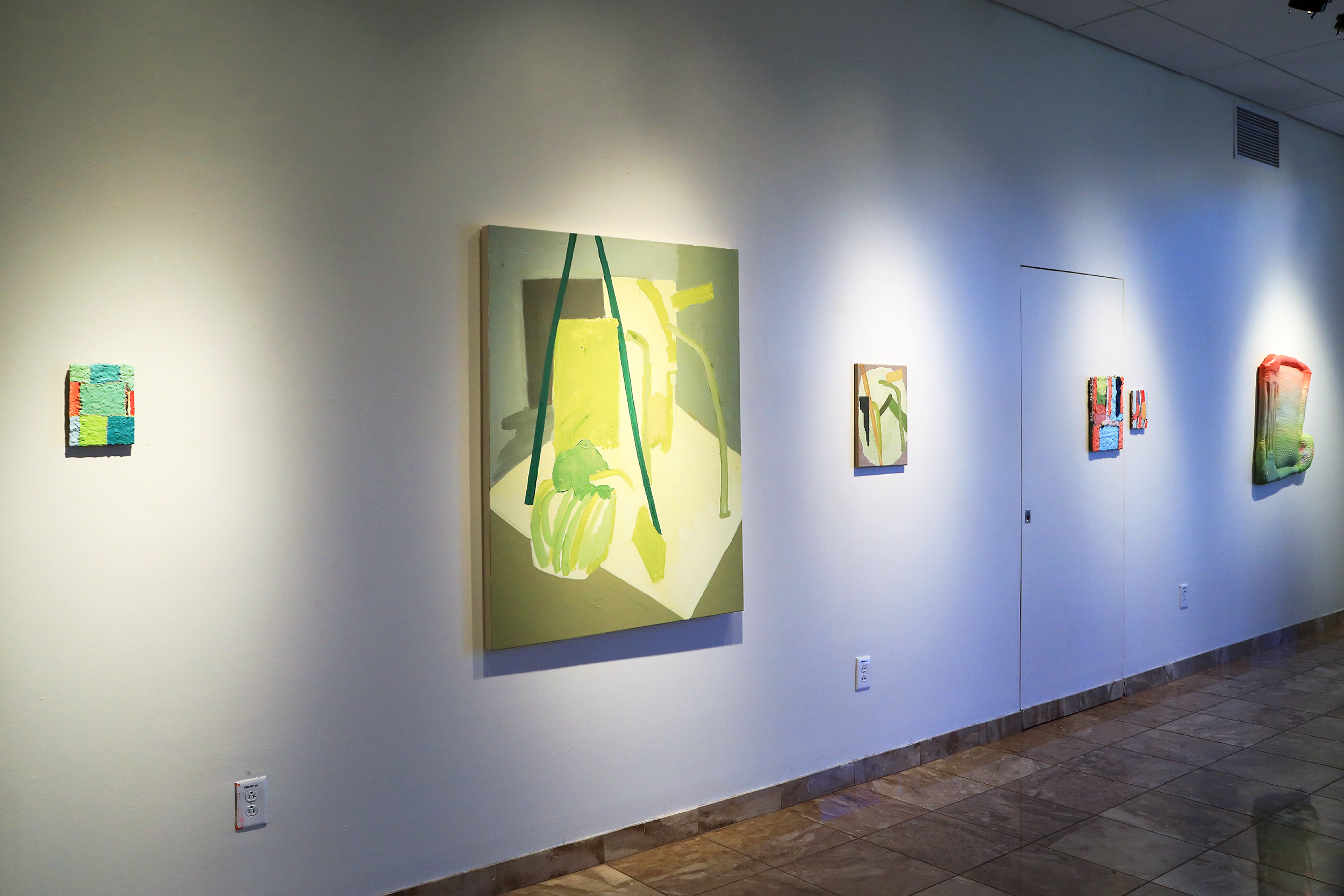
![[Detail] Carri Jobe. "Stilts and Stage." 2017. Oil on Canvas.](https://images.squarespace-cdn.com/content/v1/59f121cdb7411c32b424f560/1520457435861-PKDXO5H2HIB95IG38LGR/2018-02+Weight+of+Play+%2825%29.jpg)
![[Detail] Carri Jobe. "Stilts and Stage." 2017. Oil on Canvas.](https://images.squarespace-cdn.com/content/v1/59f121cdb7411c32b424f560/1520457445587-OO6ONTBNXKJ6OEZSLZ92/2018-02+Weight+of+Play+%2826%29.jpg)
![[Detail] Carri Jobe. "Stilts and Stage." 2017. Oil on Canvas.](https://images.squarespace-cdn.com/content/v1/59f121cdb7411c32b424f560/1520457448631-BFRYRLPC39HKAO0R7AAU/2018-02+Weight+of+Play+%2827%29.jpg)
![[Detail] Carri Jobe. "Stilts and Stage." 2017. Oil on Canvas.](https://images.squarespace-cdn.com/content/v1/59f121cdb7411c32b424f560/1520457473193-HNVXEM7INCQRNGJIG8QA/2018-02+Weight+of+Play+%2828%29.jpg)
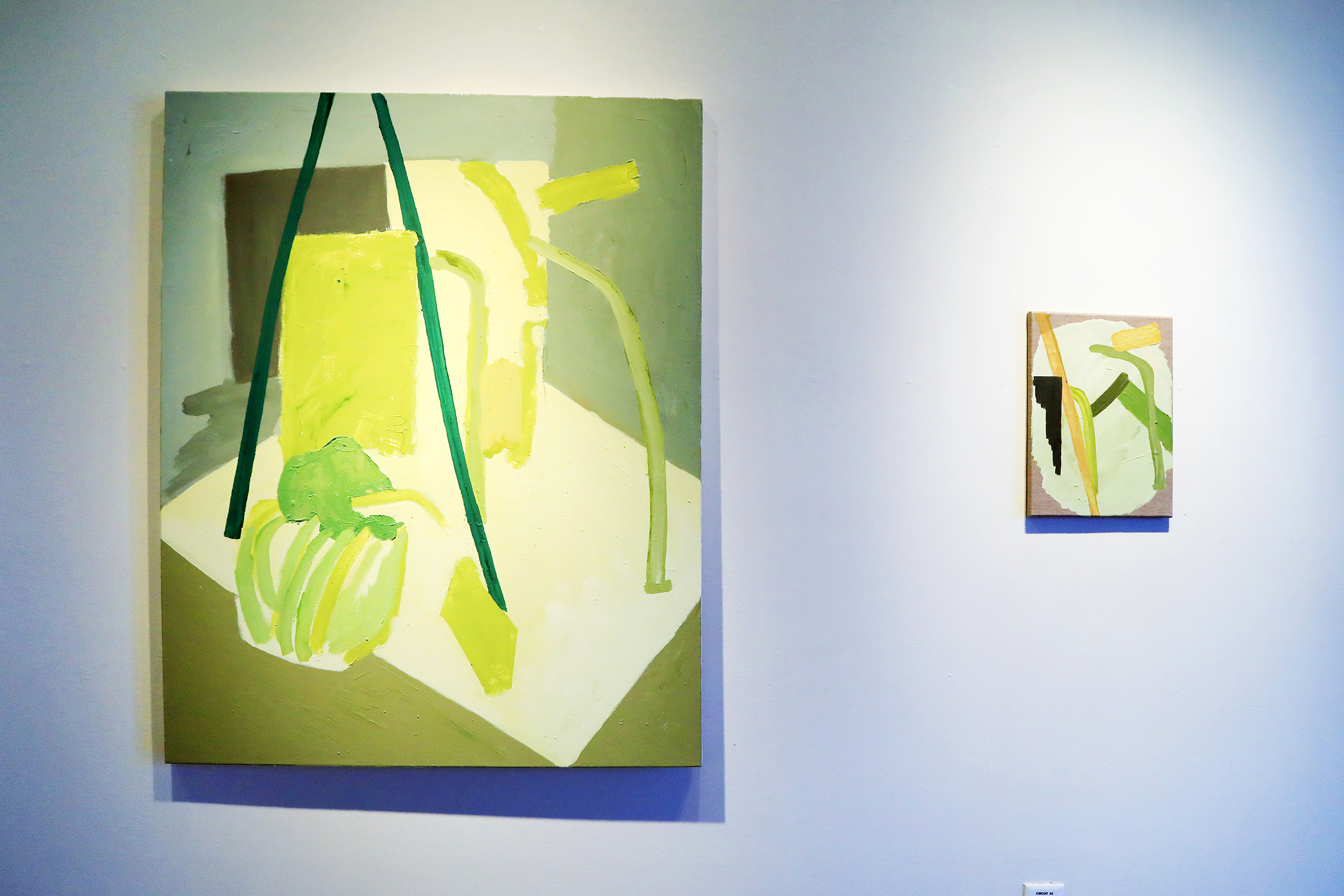
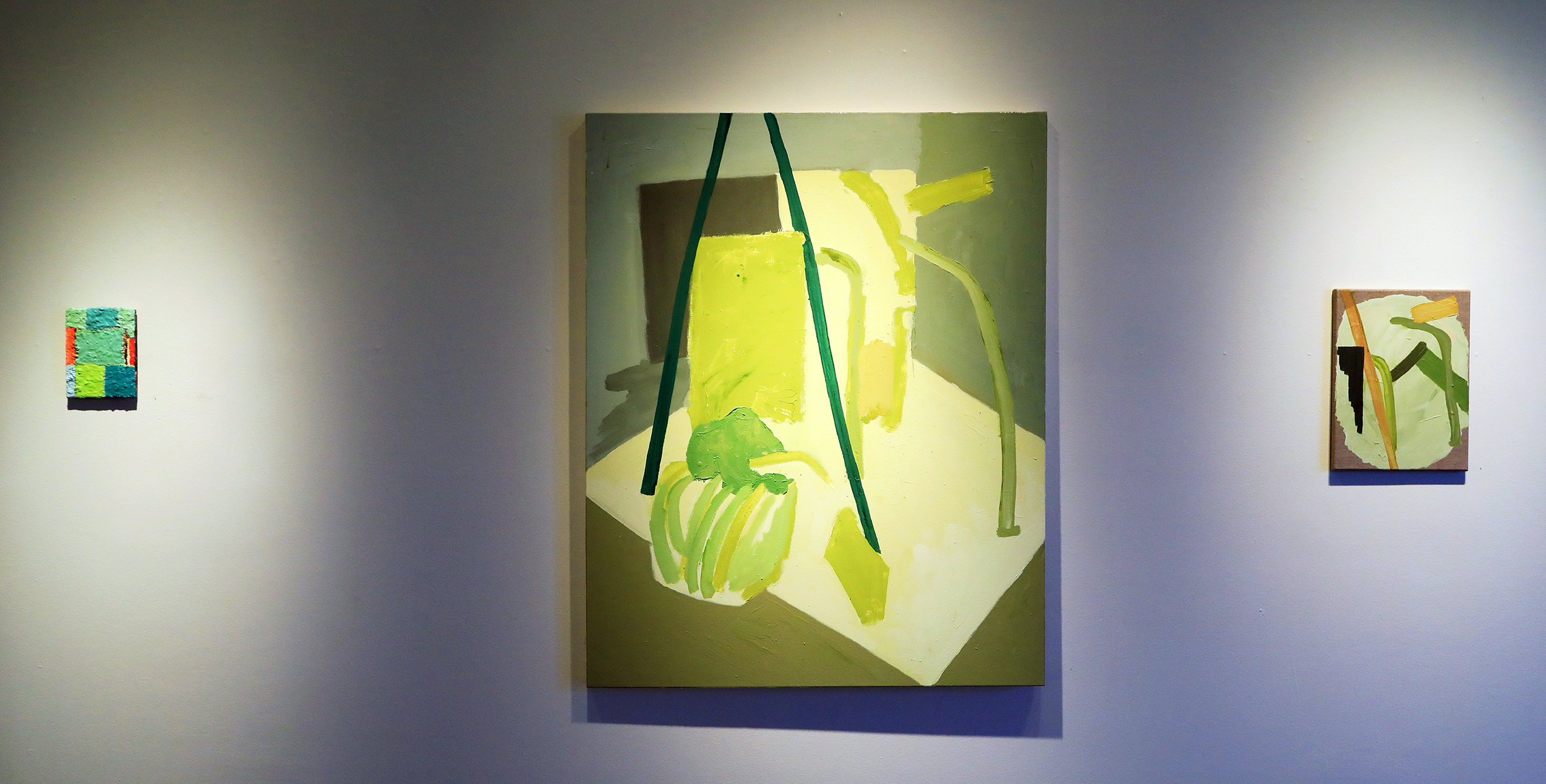
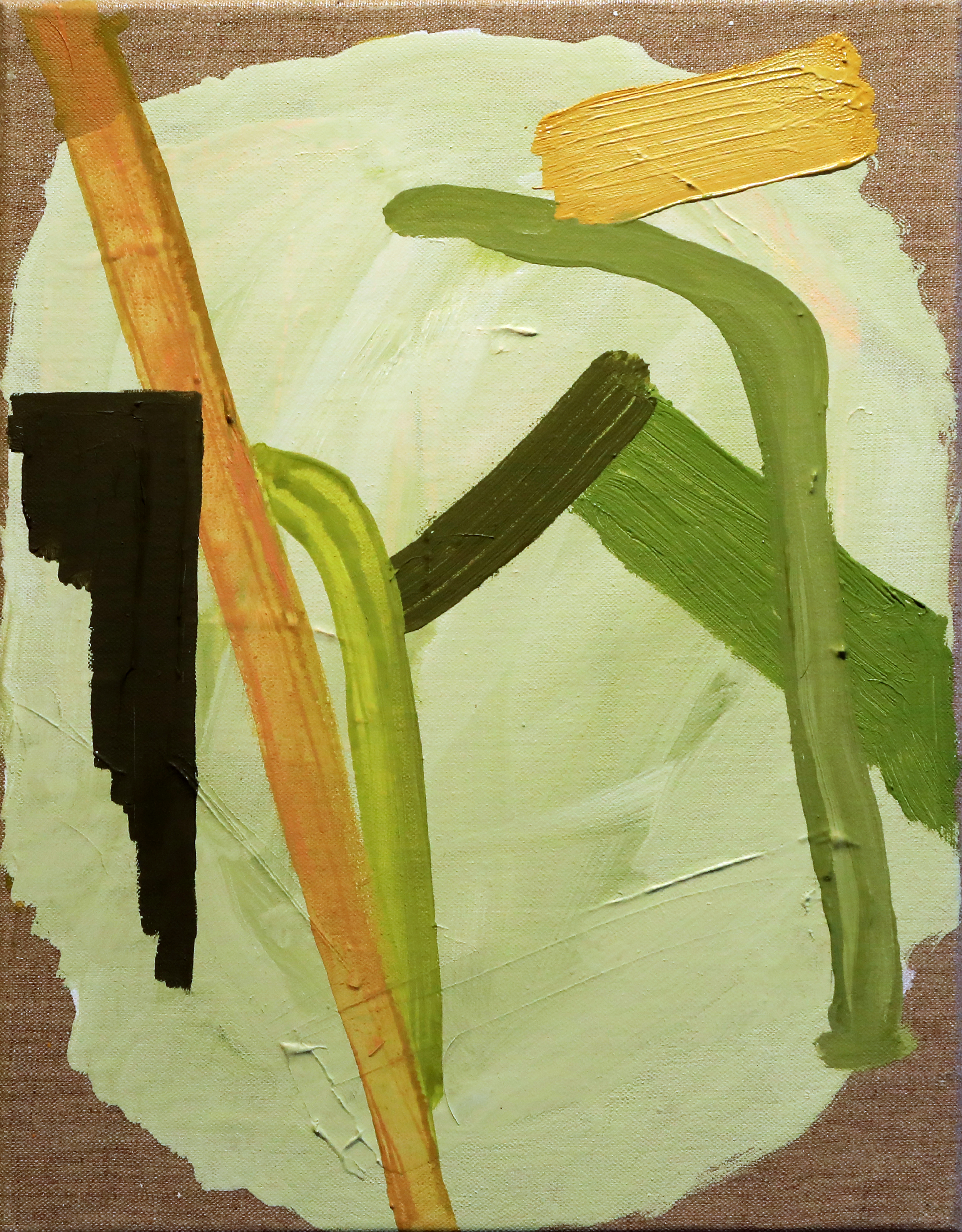
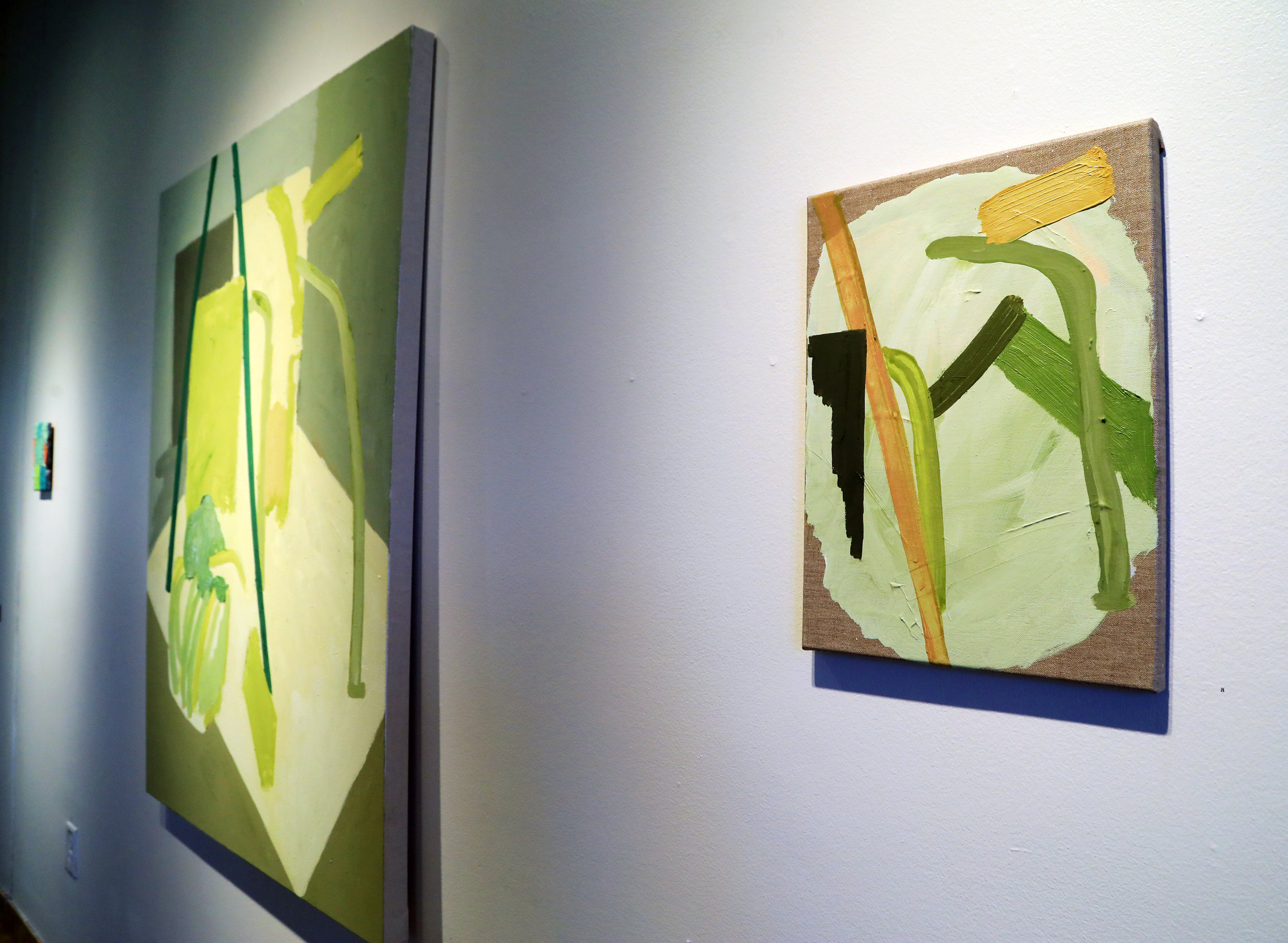
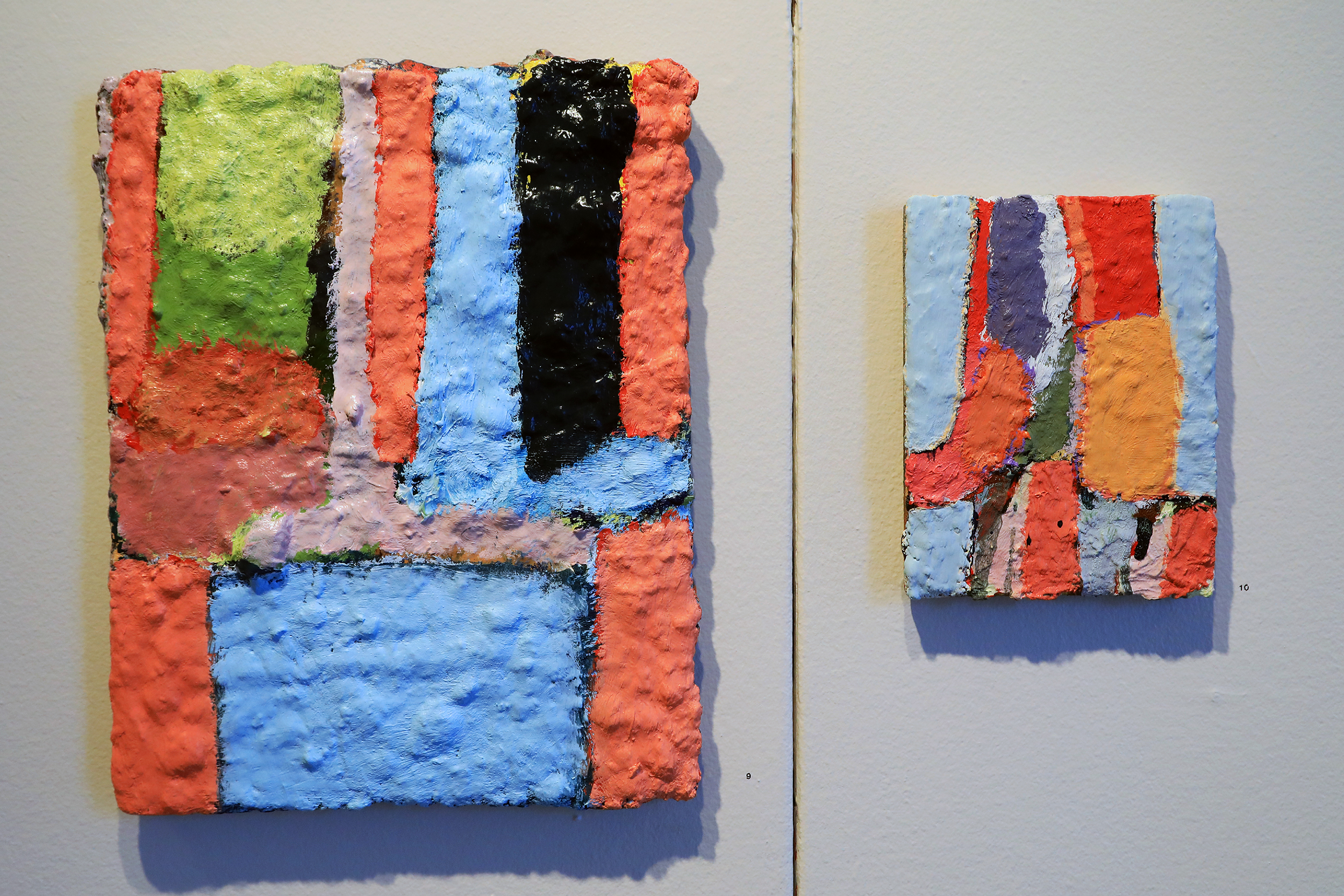
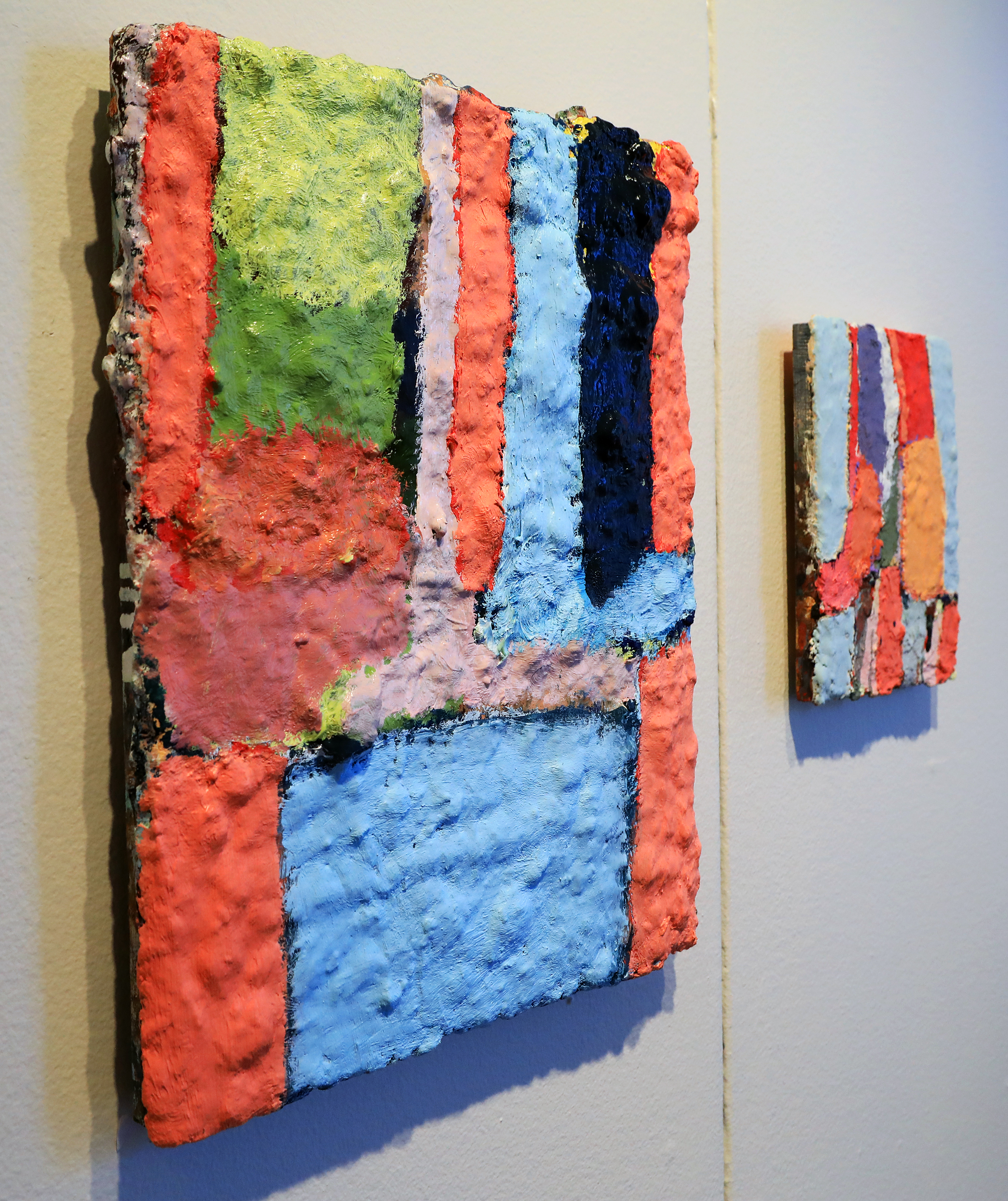
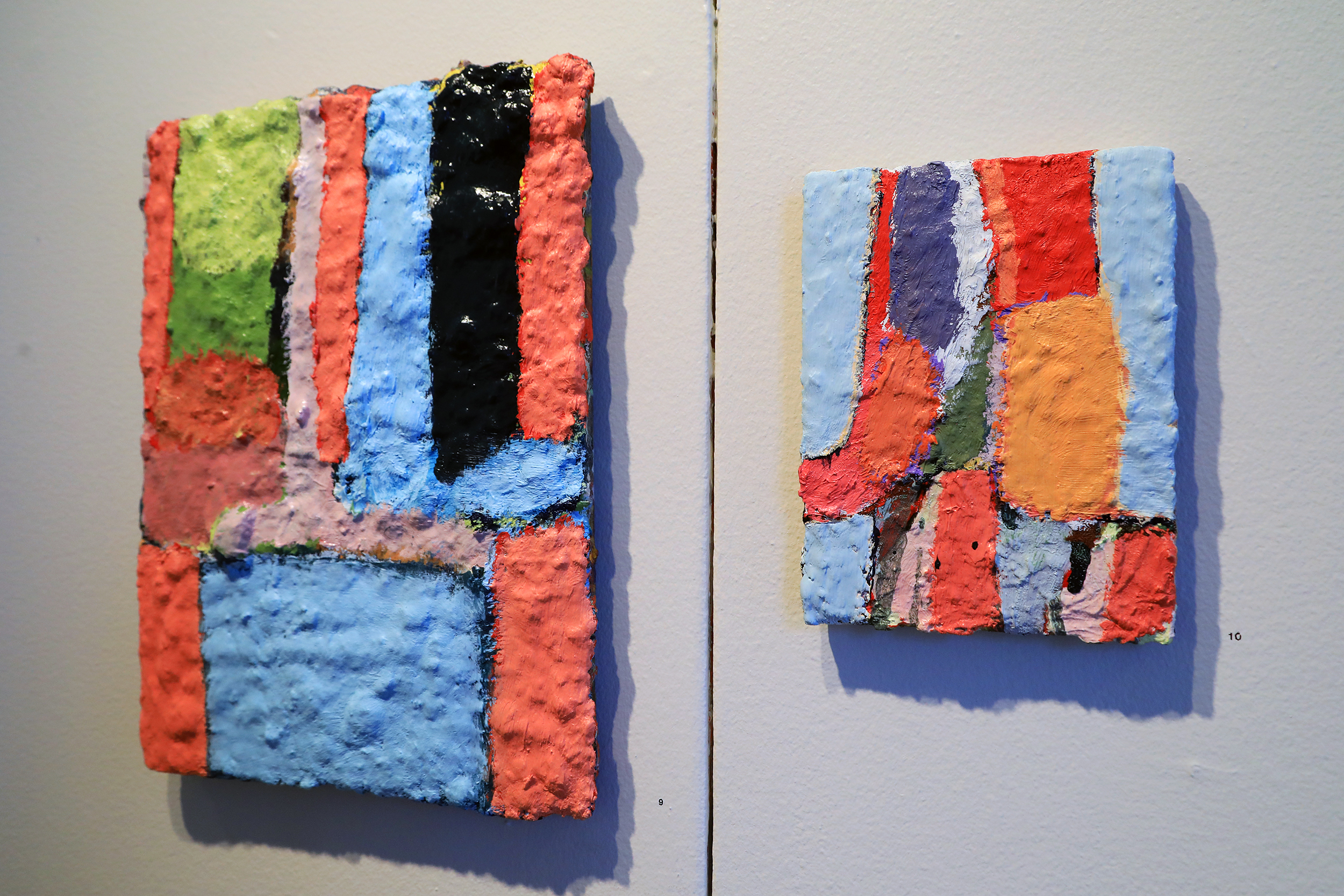
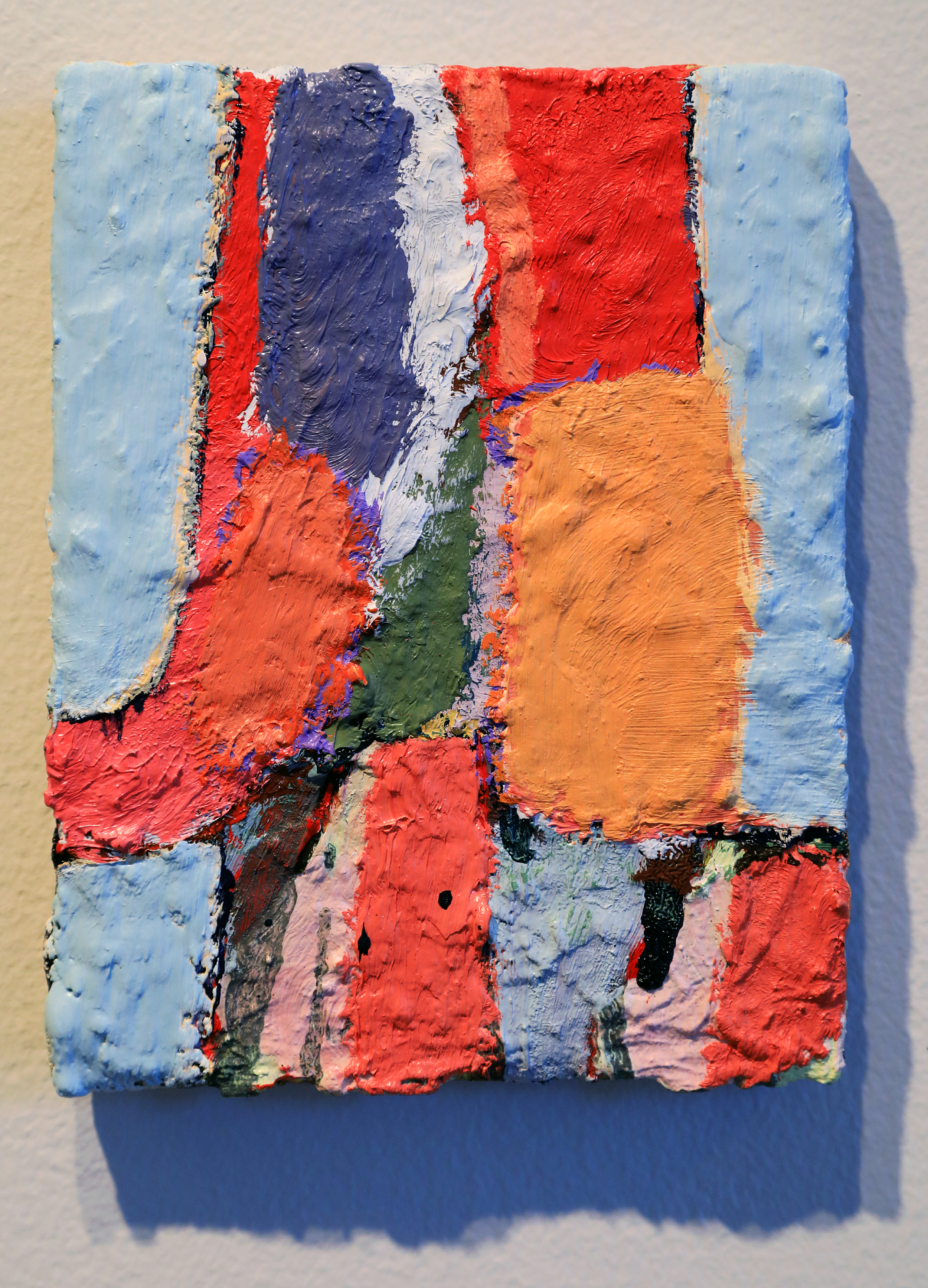
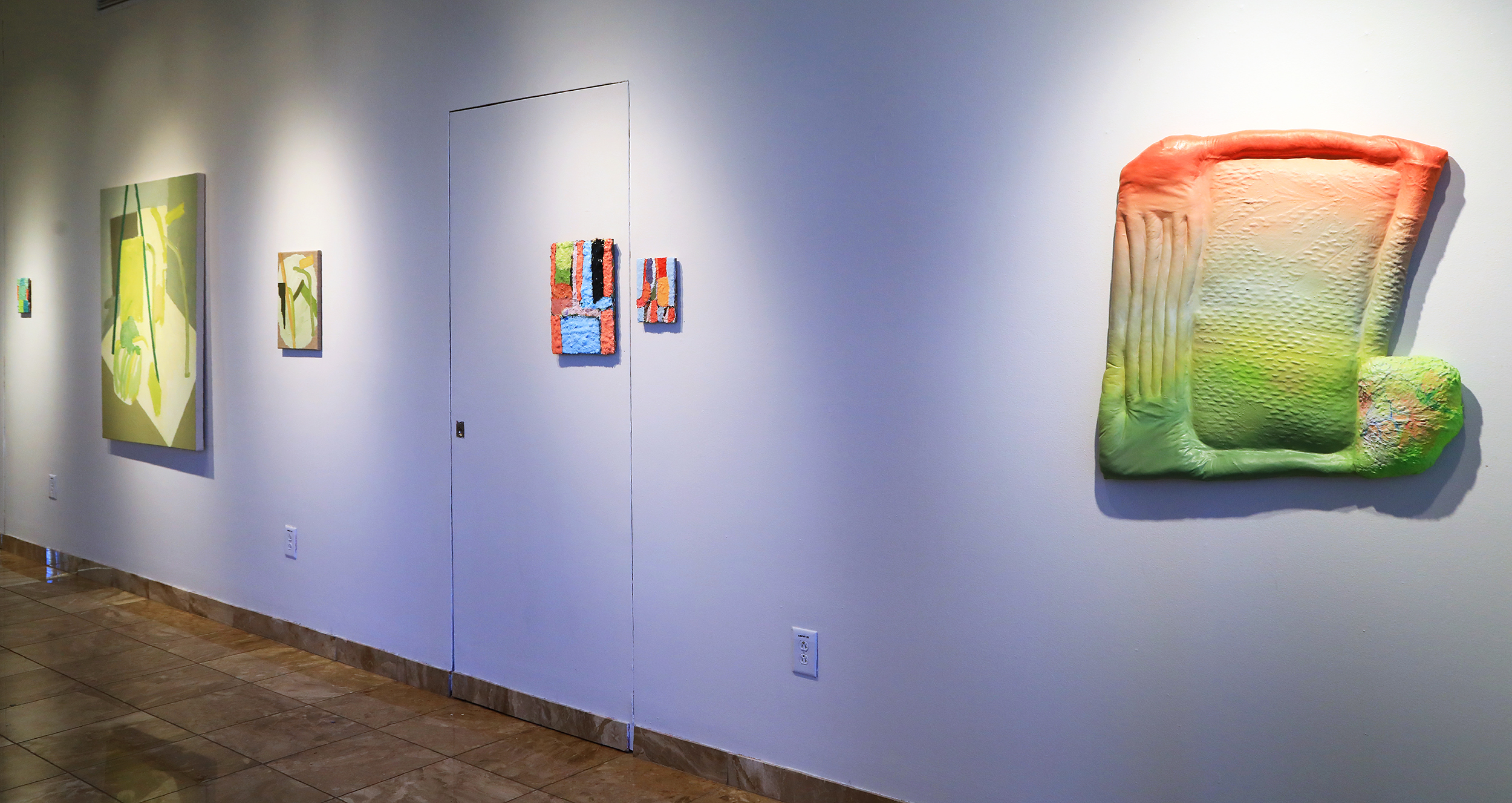
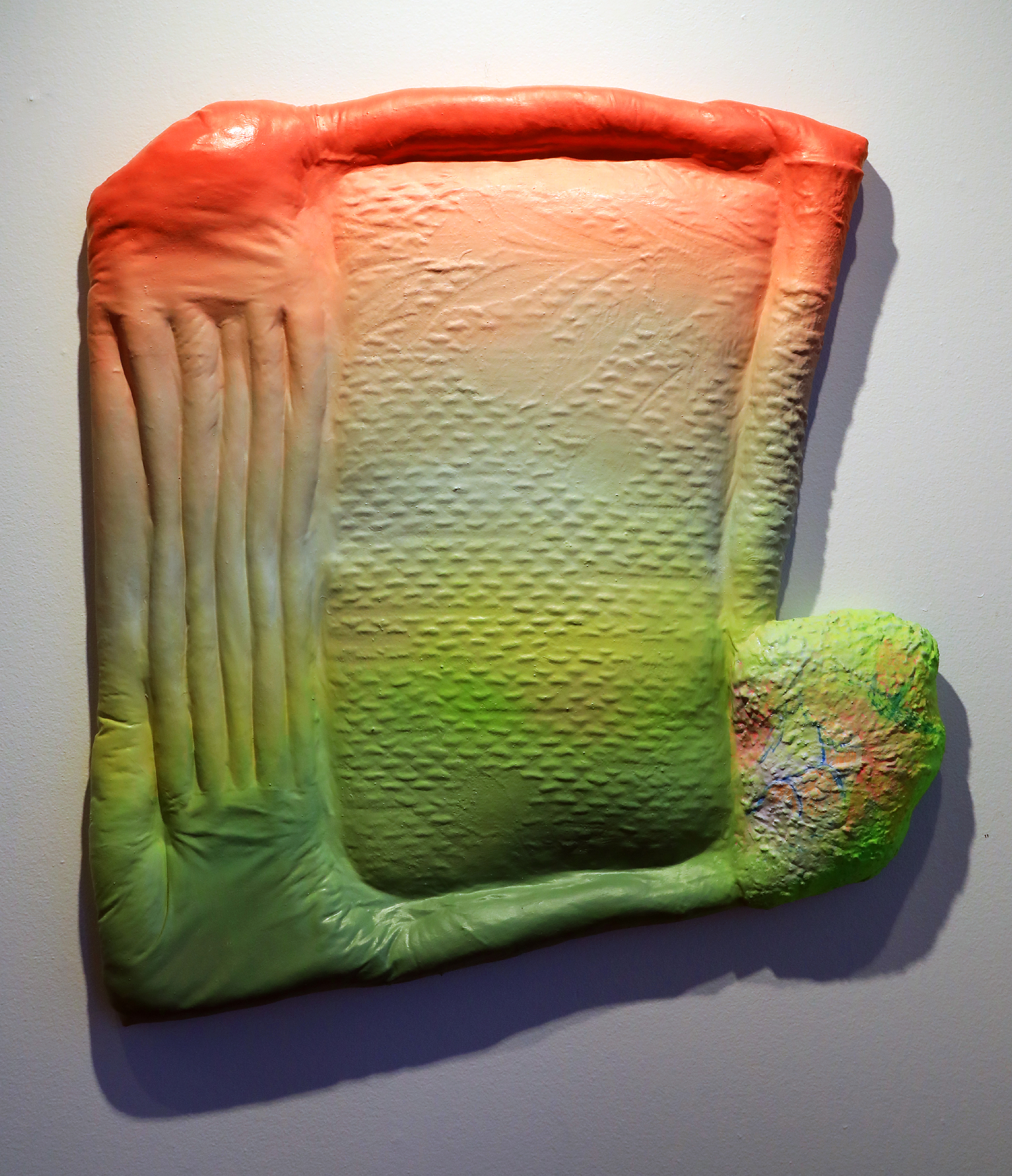
![[detail] Amelia Briggs. "Grouch." 2018. oil, acrylic, latex, and flashe on stuffed fabric over panel.](https://images.squarespace-cdn.com/content/v1/59f121cdb7411c32b424f560/1520457592302-K16GMBPSGFZOI6R8C0K6/2018-02+Weight+of+Play+%2839%29.jpg)
![[detail] Amelia Briggs. "Grouch." 2018. oil, acrylic, latex, and flashe on stuffed fabric over panel.](https://images.squarespace-cdn.com/content/v1/59f121cdb7411c32b424f560/1520457586534-59YLS2I3N7ETLTRFGYPZ/2018-02+Weight+of+Play+%2840%29.jpg)

![[detail] Carri Jobe. "Lift and Stretch no.2." 2016. oil on canvas.](https://images.squarespace-cdn.com/content/v1/59f121cdb7411c32b424f560/1520457625152-BY3URB4CD41QI98N5WLR/2018-02+Weight+of+Play+%2844%29.jpg)
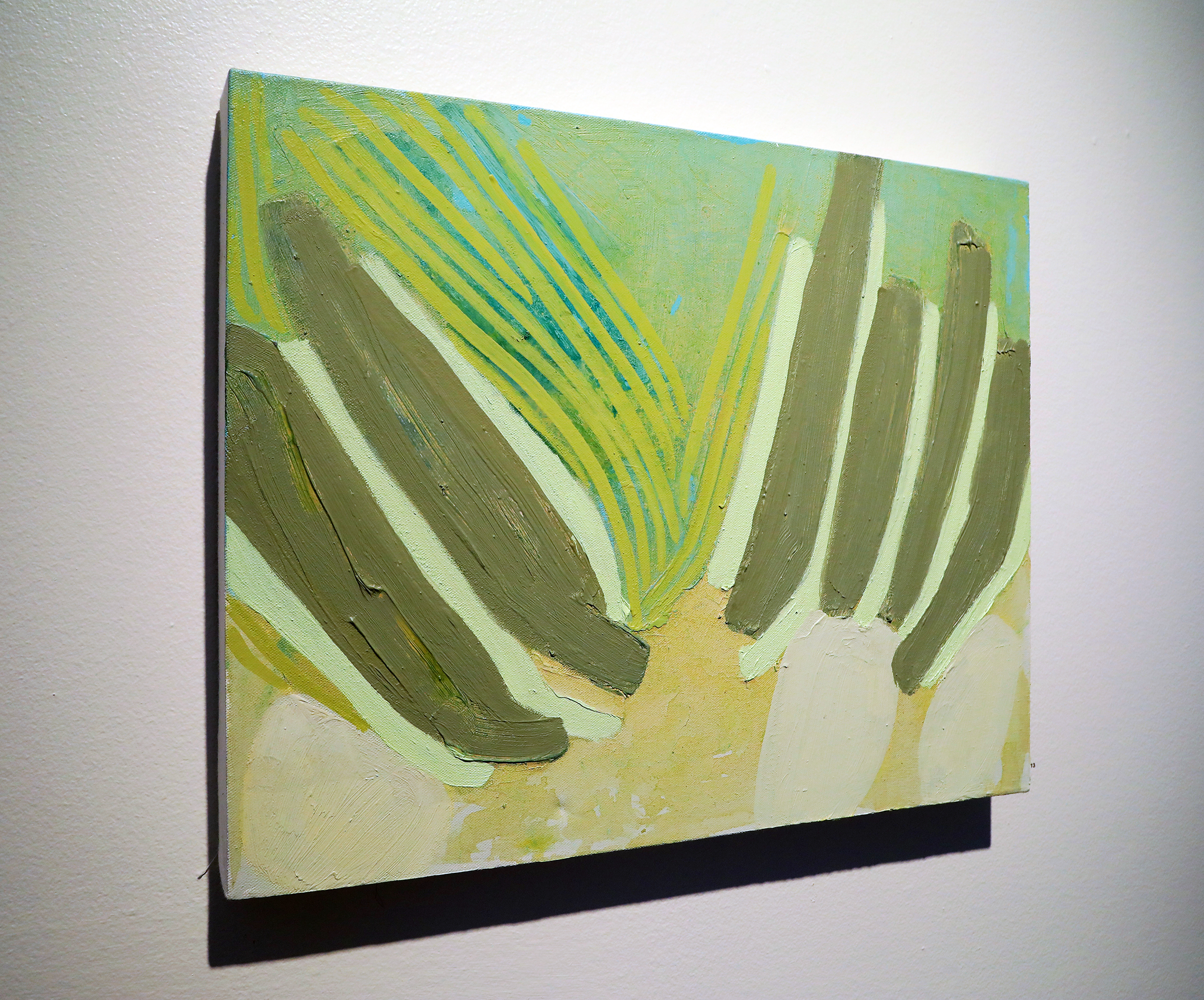
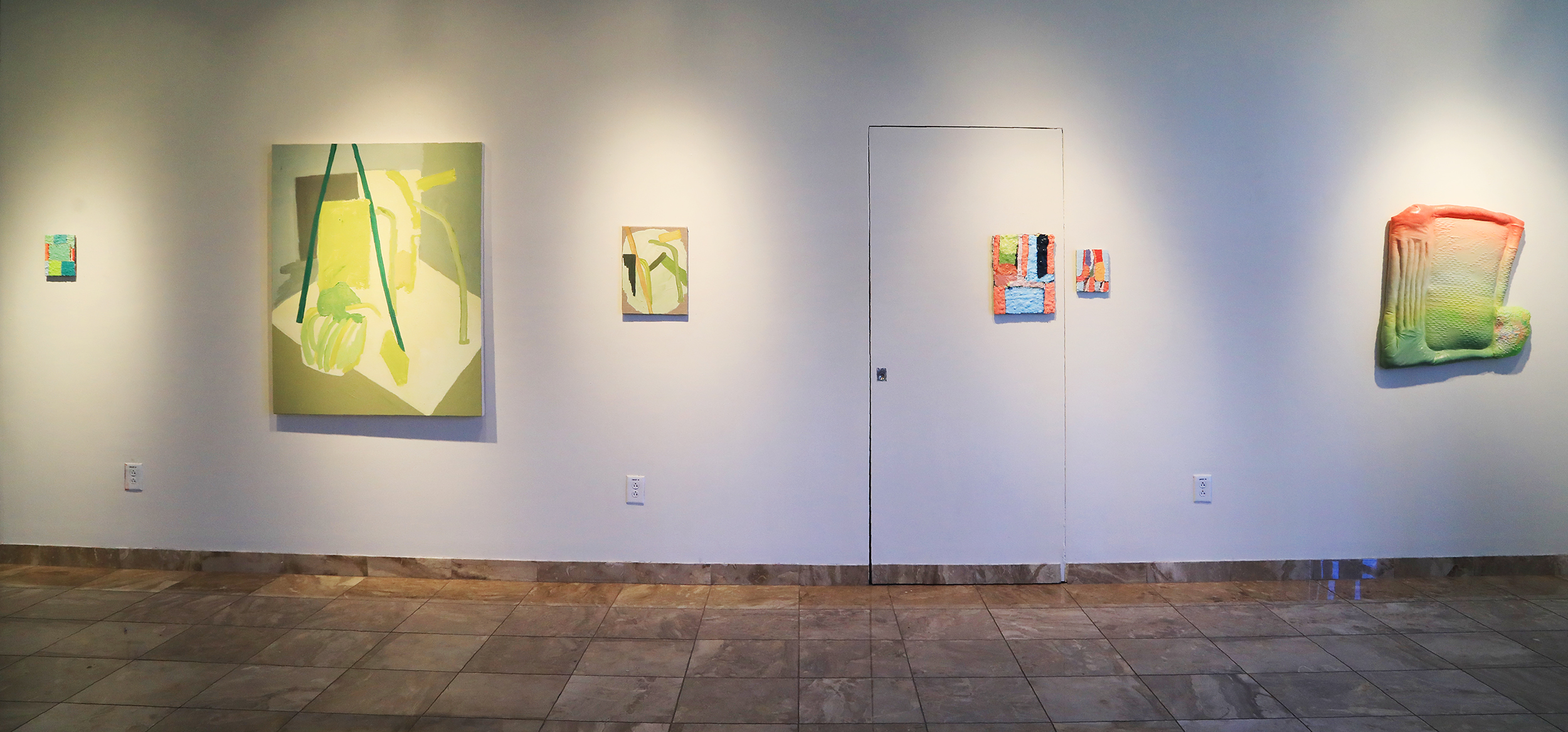
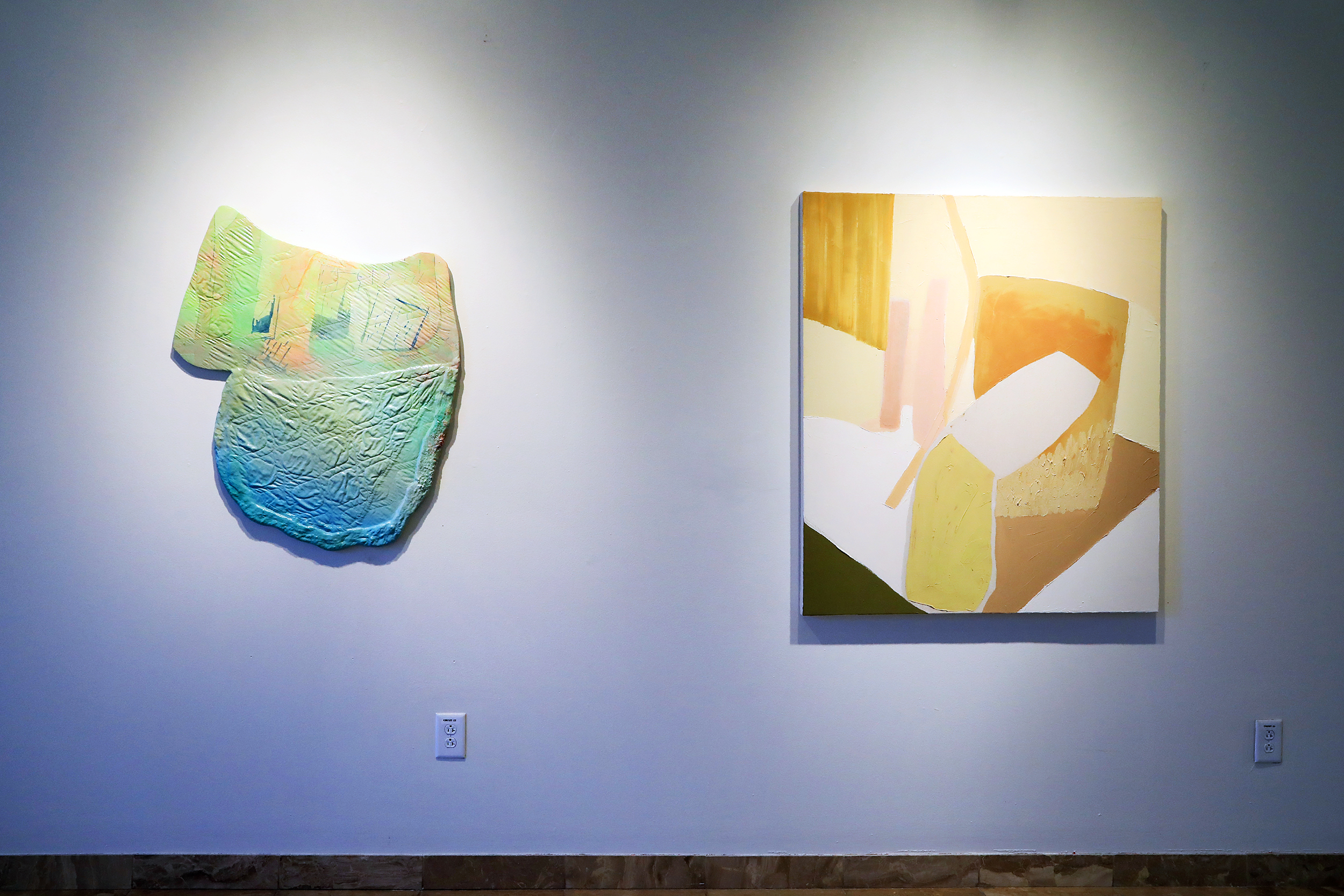
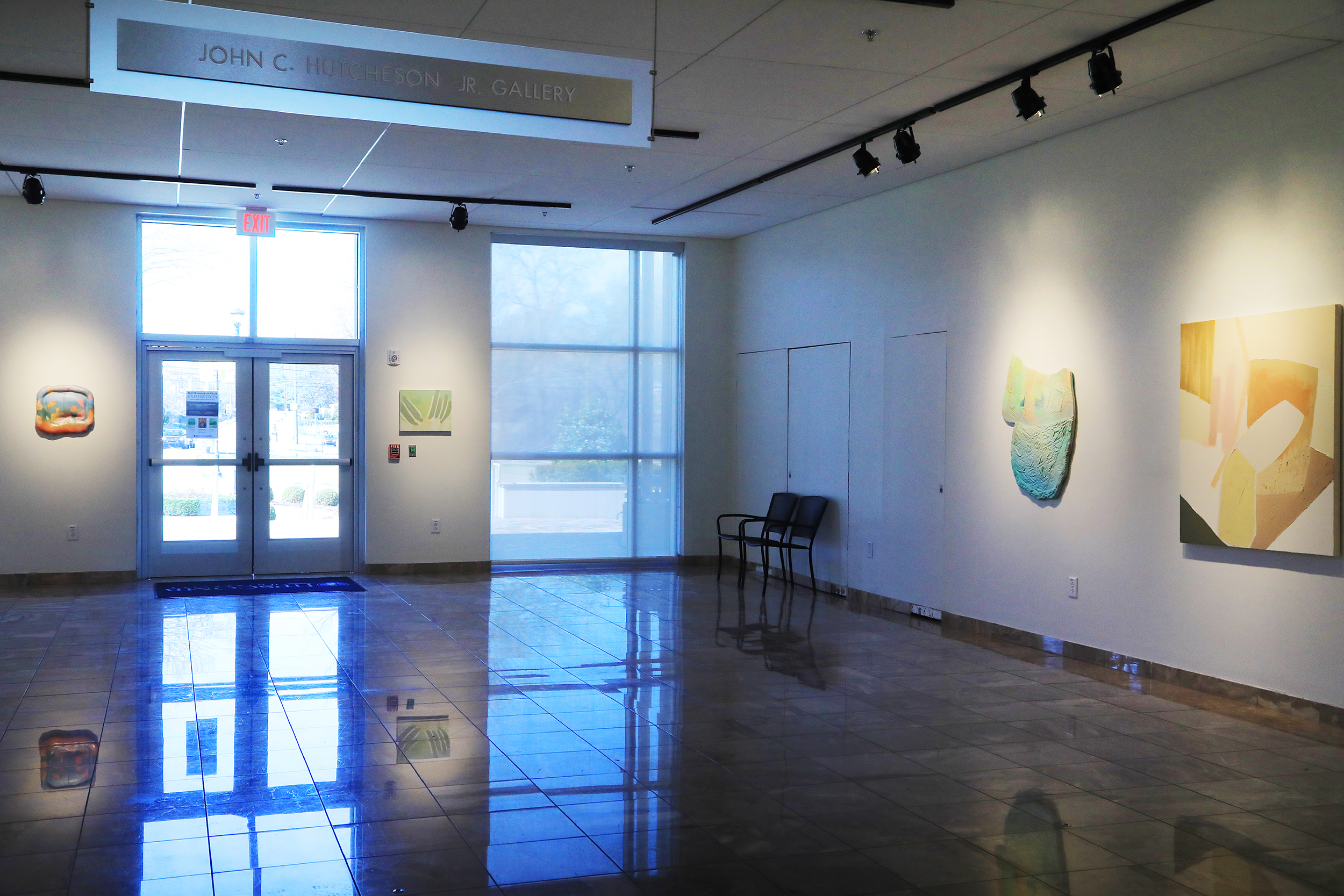
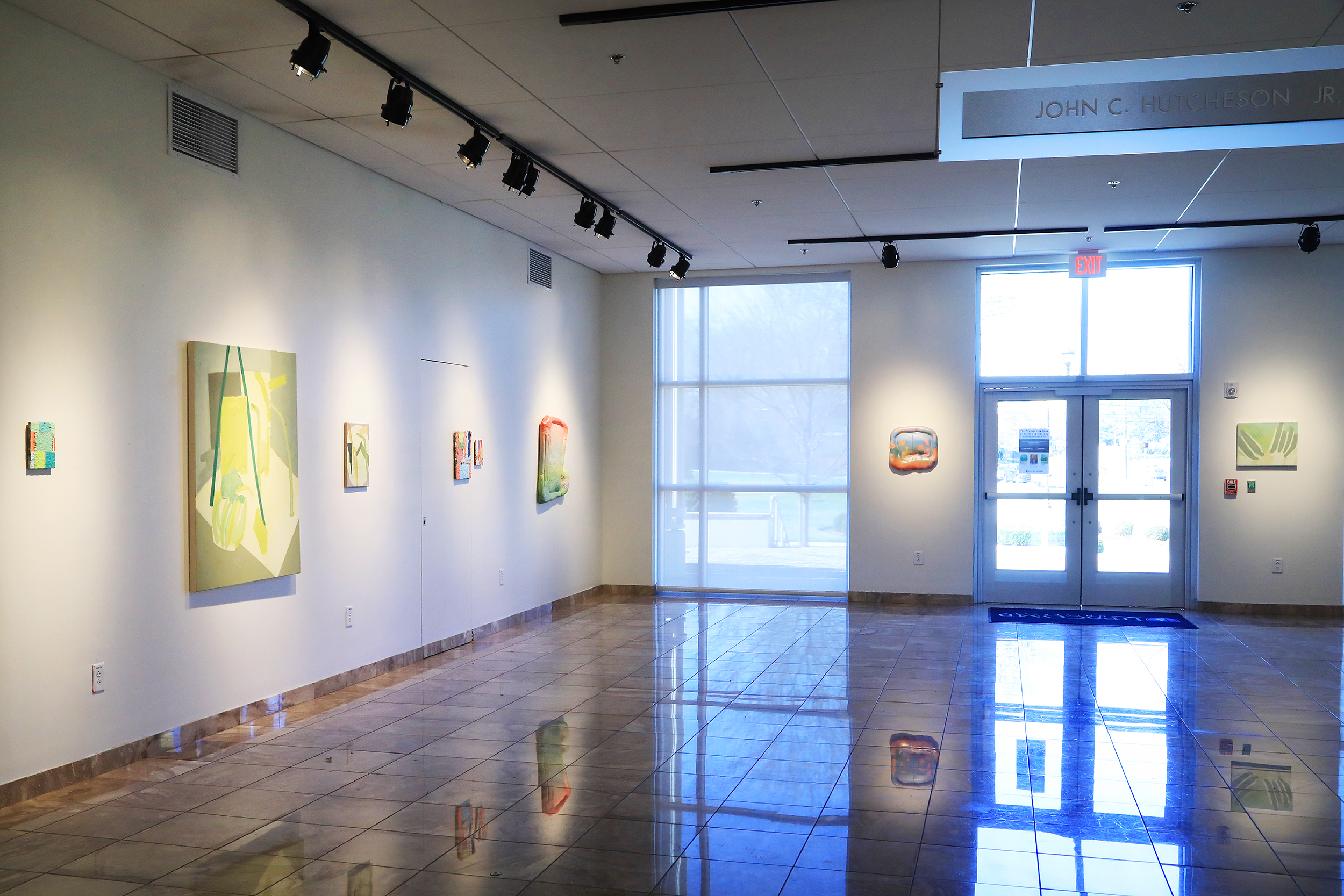
Carri Jobe
Carri Jobe practices painting, drawing and stitching and is currently exploring these mediums through a restricted set of formal concerns. Color and texture dominate her process and the work explores communication and psychological awareness.
Jobe has exhibited her work nationally and internationally. She received her BFA from the University of Tennessee and then spent time in San Antonio, Texas and Brooklyn, New York where she continued her art practice, worked in non-profit administration, and coordinated art handling and installation projects. She and her husband, Brian R. Jobe, now base their art practices in Tennessee, have co-founded Locate Arts, and are raising two young boys. Presently, she is the Co-Executive Director of Locate Arts & Seed Space. [via Carri's website]
Amelia Briggs
"Amelia Briggs is known for breaking down cartoons, comics and toys – childrens imagery associated with the building blocks of discovery and understanding. She reimagines simple lines and shapes to create objects that appear to be inflated, at once feeling personal and universal, suggestive of history and a search for identity.
As a community we share the same visuals and details that make our surroundings home, however we each bring a unique understanding and history to the table. The bulbous and colorful paintings that Briggs creates do not spell out a specific narrative; instead they reimagine a shared language – hopefully offering a springboard of recognition and possibility.
In addition to her role as a visual artist Briggs is the director of David Lusk Gallery in Nashville, TN and is currently teaching a professional practices course to Senior Thesis students at Austin Peay State University. Her work has been exhibited extensively and was recently featured in Native Magazine, WeHome Podcast, Peachy Keen Podcast, The Scene and Nashville Arts Magazine." [Via LocateArts]
Douglas Degges
"Douglas Degges is an artist and educator living and working in Chattanooga, TN. He received his MFA from the University of Iowa and has been an artist-in-residence at the Millay Colony and the Vermont Studio Center. His work has recently been exhibited at The Shed Space in Brooklyn, NY, mild climate in Nashville, and the Athens Institute for Contemporary Art in Athens, GA. He currently teaches at the University of Tennessee in Chattanooga." [via LocateArts]







